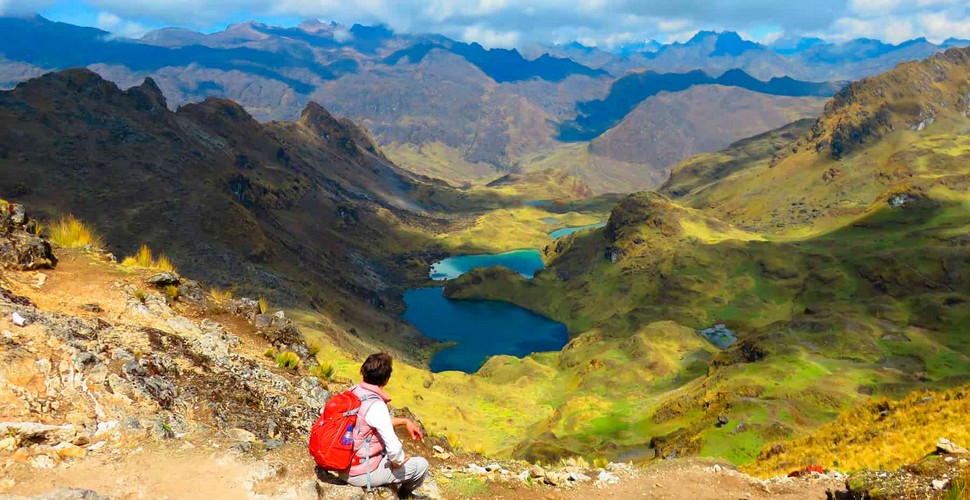

Claire Dean
Travel in South America is a joy to behold. The rich variety of destinations, experiences, landscapes and geography fascinated me so much, that I chose to relocate here, over 20 years ago! The best thing I ever did! Allow me to share my knowledge and passion for Central and South America with you and help you plan your holiday of a lifetime!

Interesting Facts about the Lares Trek
Written by:Claire Dean
Last Update: 2025-01-18
You’ve done all the research about the Inca Trail and Machu Picchu. You’ve found out the permit situation is a real issue for the Inca Trail, or you know that the Lares Trek is better than all the other treks to Machu Picchu. Most people choose the Lares Trek because they started researching their dream trek to Machu Picchu. If Machu Picchu is the goal and you realize the Incas built trails throughout the Andes, you will understand that the alternative Inca Trails may not be so alternative. They served a purpose, just as the classic Inca Trail did. The Lares Trek is so much more than an alternative for an overbooked Classic Inca Trail. The Lares Trek has a lot to offer people looking for a combination of nature, history, local culture, and remoteness. Here are several reasons why the Lares trek is so special.
Lares Trek
The hot springs
The Lares Hot springs can be visited as a day trip, but it makes much more sense to do it as a part of the Lares Trek. The springs themselves are well-kept pools with blissfully hot water to soothe the aches and pains that come part and parcel of long-distance trekking. It’s important to note that the Lares Hot Springs is somewhat essential and not, by any stretch of the imagination, luxury. The water is fresh and clean, but it is not crystal clear due to the minerals from the earth. Despite this, the location of the springs high in the mountains makes them worth visiting and a great way to spend a few hours. If you visit the Lares hot springs, either on a day trip or a trek, take sandals, a towel, soap, sunblock (the sun is vicious at this elevation), and a small lock to store your valuables in one of the provided lockers.
Hot Springs Lares
Archaeological Sites
It is essential to know that there are no ruins on the Lares Trek until you reach Machu Picchu. You may see some ruins in the distance, but the trek does not visit any ruins directly. The route is part of the more extensive Inca Trails network covering 30,000km and half the continent, not the 42km classic Inca Trail into Machu Picchu. The Lares Valley is named in the Spanish chronicles, where the Inca population fled after their initial invasions. As an extension, the Lares Valley may not be overflowing with the ruins you might expect on the Inca Trail to Machu Picchu. Still, it is undoubtedly just as historically significant.
Mules on The Lares Trek
Altitude is an issue.
Altitude sickness can hit some people hard; therefore, being well-prepared on The Lares Trek is always essential. Make sure you acclimate in Cusco for three days before Cusco for three days before your trek; your body will thank you for it! Guides carry a first aid kit and an oxygen bottle because the headaches and nausea related to the attitude can be very unpleasant. Coca leaves will help also and is a natural, local remedy to combat altitude symptoms. You may also want to speak to your Doctor or travel clinic, especially if you are short on time, as there are medications that can help combat altitude symptoms.
Light Snowfall Lares Trek
Cultural interaction
Peru’s native communities may not have had an easier time in the past, but they’re the country’s crown jewels today. These communities include the Quechua people, who live along the Lares trail and have more character and tradition than you would ever expect. Not only is Quechua the most widely spoken Native American language in the world, but it’s also a majority language in Peru, with over a quarter of the population still speaking it. The Quechua people have a rich weaving culture, evident in the handcrafted blankets and clothes they create from naturally dyed llama, alpaca, and sheep wool. Their musical, culinary, and traditional dress is epically diverse and fascinating in this remote region.
Local People
Family Trekking
Lares is a straightforward trek in Peru, making it an excellent choice for families trekking in Peru with children. The Lares trek is also much less frequented by trekkers, and you are likely to see hardly another soul on this route! This makes Lares an excellent choice for hikers looking to get off the beaten track and enjoy a bit more solitude while hiking in the Andes. There are also unique family activities such as meeting the local children, visiting the hot springs, lots of llamas and other activities that break up the hiking for the little ones!
Llama on The Lares Trek
Remoteness
Imagine walking on a path with only the sound of your footsteps for companions and stopping to feel the full impact of pin-drop silence. Then imagine looking up at the imposing mountain ranges around you. The remoteness of this trek with only a few native communities and llamas for the company is unique and exhilarating. You won’t find as many people on this trek as you would on other more popular tours in the region. If you prefer the sense of isolation and solitude and want to feel like the only person in the world, the Lares Trek is the trek for you!












